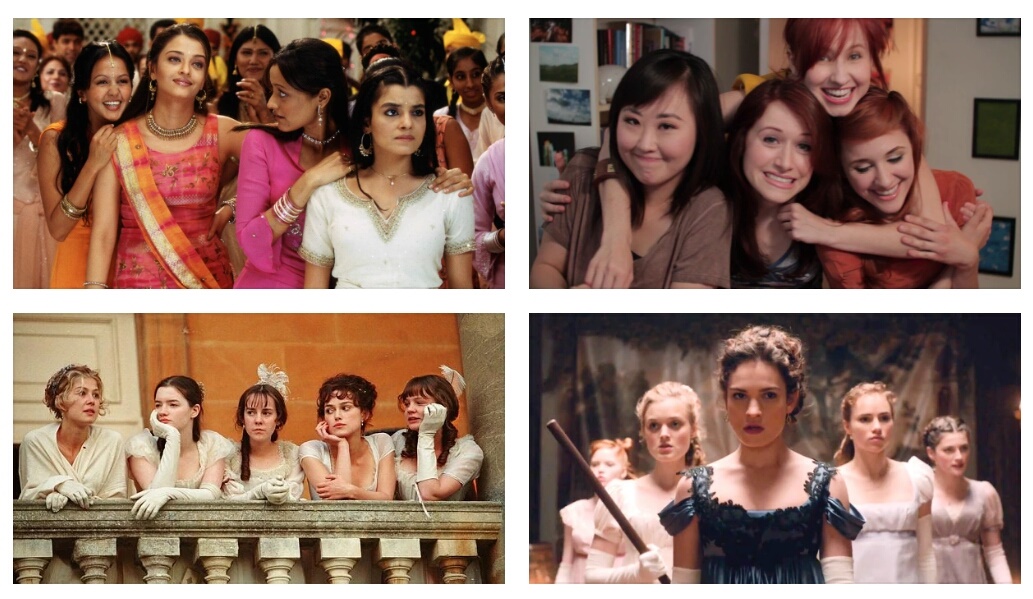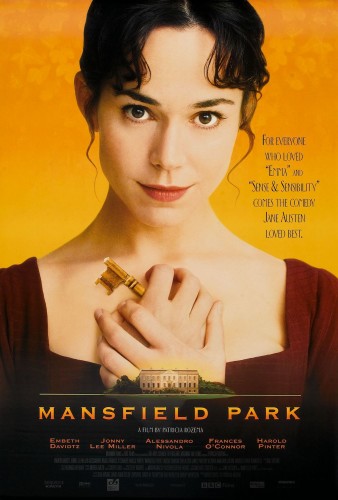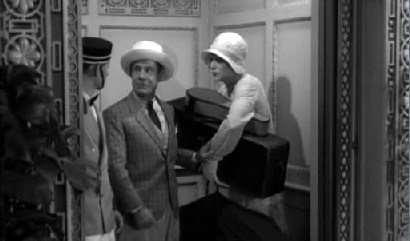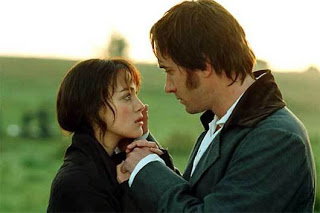How BBC’s ‘Pride & Prejudice’ Illustrates Why The Regency Period Sucked For Women
By Myrna Waldron
 |
| Pride & Prejudice DVD Cover (Source: Wikipedia) |
It is a truth universally acknowledged that those in pursuit of an English degree must be familiar with the works of Jane Austen. Fortunately for me, she is one of my favourite authors, and Pride & Prejudice is one of my favourite books. (And that’s saying something, as I read a lot.) It is one of the great novels of English Literature that can be utterly boring with the wrong teacher. Many times people fail to pick up on the social satire woven throughout the novel, especially since the language and culture is so different now that it’s 200 years later. Once you understand the social context in which the novel was written/published, and get used to Austen’s subtle brand of sarcasm, one can understand why Pride & Prejudice has endured so long. It doesn’t hurt that Mr. Darcy is one of the quintessential Byronic heroes too.
The 1995 BBC miniseries adaptation is by far the most popular, and the reason why can be summed up in two words: Colin. Firth. I first watched the miniseries when I was 10, and read the novel for the first time at 15. I can say quite confidently that the miniseries strongly helped me to understand the novel better, but…that’s not the only reason why it was memorable for me. Puberty already had its iron grip on me at that time, and when I saw Mr. Firth as Mr. Darcy for the first time…let’s just say I realized I liked boys. Colin Firth has had a wonderful sense of humour about his signature role, more-or-less reprising it in the Bridget Jones series (Side note: Colin Firth is an actual character in the 2nd novel.) and in an interview with a French magazine that asked him who the women in his life were, he answered, “My mother, my wife, and Jane Austen.” Unusually for a western media production, the makers knew their audience, and presented the miniseries for the female gaze. Firth is shown bathing, fencing, and, most famously, swimming in the pond near Pemberley and emerging from it with a wet white shirt.
Regretfully leaving Mr. Firth’s impact aside, he is not the only reason why the BBC adaptation is culturally important. The 6 episodes of the miniseries grant far more lenience in terms of time constraints, and thus one of the most important themes of Austen’s novel is retained: Her feminism. The protagonists in her novels were all women, and she wrote them for a mostly female audience. Her primary goal was to create sympathy for the status of women and the little rights they retained. Reminder: This is an era where women could not vote, had no bodily autonomy, could not freely marry whomever they chose, were restricted to domestic spheres, and, in some cases, could not even inherit their father’s estate. Pride & Prejudice, and the BBC adaptation, touch on several of these issues, subtly and sometimes directly condemning them from a feminist outlook. In addition to this feminist subtext, part of Austen’s social satire is pointing out the ridiculous class restraints in which the characters had to endure.

 |
| The Bennet Sisters, From Left To Right: Lydia, Jane, Mary, Kitty, Lizzy (Source: http://ladylavinia1932.wordpress.com/) |
The protagonist of Pride & Prejudice, Elizabeth Bennet, usually called Lizzy, is the 2nd of 5 sisters and the favourite of her father because she is witty, intelligent, and well-read. Her older sister Jane is sweet natured and the most beautiful, middle sister Mary is plain, sanctimonious and withdrawn, and youngest sisters Kitty and Lydia are boy crazy and impulsive. Lydia most closely resembles her mother in personality and is thus her favourite. Mrs. Bennet is absolutely obsessed with the idea of marrying off her 5 daughters as soon as possible, and to rich men if they can manage it. The girls must endure their mother’s constant conspiring to marry them off – the elder sisters are resigned to their mother’s obsession, but the teenage youngest sisters are thoroughly swept up in their mother’s enthusiasm.
The major issue the Bennets face is that none of the daughters can inherit their father’s estate. They are confined to an entailment, which is a legal inheritance document stipulating that a hereditary estate can only be passed on to a certain person, usually the eldest living male relative. Unfortunately, the closest male relative to Mr. Bennet is Mr. Collins, a minister who is insufferably smug while pretending to be caring. When he suddenly descends on them for a visit, he is met with a certain degree of resentment, for when Mr. Bennet dies, Mr. Collins is fully within his rights to immediately throw out the grieving widow and daughters onto the streets. Thus, there is a practicality to Mrs. Bennet’s obsession – if her girls do not marry, they will be helpless and homeless.
Mr. Collins in this adaptation is utterly revolting. Greasy and simpering, he constantly brags about his rich patroness, Lady Catherine de Bourgh, (who is also Mr. Darcy’s maternal aunt) fawning about her even while miles away. He has visited with a mission – Lady Catherine thinks he should marry, so he figures he might as well choose from one of the Bennet sisters. Vainly, he sets his sights on Jane first as she is the most beautiful, but after being persuaded that Jane has another suitor (more on him later) he instead moves on to Lizzy, the next prettiest daughter. His attempts to woo Lizzy are incredibly repulsive and shortsighted, for he has chosen the worst possible match for him out of the 5 sisters. A bootlicking and hypocritical minister could not possibly be happy with a headstrong and brutally honest intellectual. It’s kind of sad he never noticed Mary and tried to court the sisters solely based on their looks, for although she’s plain she would have been a far better match for him.
 |
| Pemberley (Source: austenprose.wordpress.com) |
Lizzy rejects his proposal with disgust, and he quickly moves on to proposing to the next closest target – her best friend Charlotte Lucas. She accepts, not out of even remote attraction, but because she felt she had no better option. At 27, she is already considered an old maid. She is not wealthy, she has no wealthy relatives, and she is not considered beautiful. So Charlotte explains to Lizzy, with a heartbreaking look of resignation, that she took all that she could get, and that she’d at least live in relative comfort. Later, when Lizzy visits her, she admits that she encourages her husband to spend as little time as possible with her. The social commentary exhibited here is staggering – I could not help but feel desperately hopeless and sympathetic for Charlotte’s situation. How awful to have to agree to marry such a repulsive man in order to prevent a future of poverty.
Jane and Lizzy fortunately have other potential suitors. Jane falls in love with Mr. Bingley, a relatively wealthy young man who has bought a manor nearby to their home. He is charming and amiable, contrasting sharply with his best friend, the brooding and proud (and even wealthier) Mr. Fitzwilliam Darcy. They meet the Bennets at a ball, where Mr. Darcy offends the others by refusing to dance with anyone. He later reveals that he was feeling more socially awkward than disdainful, but he has already done the damage of appearing arrogant and snobbish, and Lizzy immediately develops a bad opinion of him (she is the “Prejudice” to his “Pride”). Jane and Bingley are very well matched, but their presumed engagement is for a time derailed due to societal restraints. At a ball held at Bingley’s manor, Mrs. Bennet brags loudly about Jane’s not yet confirmed engagement, Mary monopolizes the piano and performs poorly, Mr. Bennet publicly admonishes her for it, and Kitty and Lydia loudly and childishly flirt with the visiting soldiers. Jane is also shy and emotionally reserved, and so Mr. Darcy concludes that she is not especially interested in Bingley. He thus uses these excuses to convince Bingley not to propose to her, which is the first of many plot points where an individual is unfairly judged by the actions of her family.
Although at first Mr. Darcy is not particularly impressed with Lizzy, he quickly grows an attraction to her. At subsequent balls he asks to dance with her, compliments her to others, and will not hear any criticisms against her. Bingley’s younger sister Caroline hopes to gain Mr. Darcy’s affections by putting Lizzy down, and thus tries to find as many physical faults with her as possible. This is a commentary on how there is societal pressure for women to compete with each other, and to only value their physical attractiveness – not much has changed in 200 years. Nevertheless, Darcy proposes to Lizzy, and it is an infamous disaster. He begins by expressing his ardent love for her, but then starts ranting about how his love goes against his character, upbringing, and will. He also states that his social status is likely to take a hit since she is neither wealthy nor well-connected. Unsurprisingly, Lizzy rejects his proposal with anger and disgust. She criticizes his arrogance and pride, and condemns him for what she believes is a particularly heartless act – the cold treatment and cutting off of his childhood friend Mr. Wickham.
 |
| Mr. Darcy and Lizzy (Source: bbc.co.uk) |
Mr. Wickham is one of the local soldiers, and catches Lizzy’s attention because he is of similar intellect to her and is charming. She already has a poor opinion of Mr. Darcy, so she readily believes Wickham’s sob story about how Mr. Darcy stopped his ambitions of becoming a minister, denied the small inheritance that Darcy Sr. had promised for him (Wickham’s father was Darcy’s father’s steward), and forced him to live in poverty, despite them having grown up together. Although Darcy cannot deny that he has acted arrogantly, he defends his actions regarding Wickham in a letter to her. In a flashback, we see Mr. Darcy at Cambridge walking in on Wickham fooling around with a young woman. Mr. Darcy explains that Wickham then left university, and requested a lump sum of 3000 pounds rather than an annual stipend. He thought they had then parted ways for good, but then found out the depths of which Wickham could descend.
Wickham likes to prey on teenage girls. He locates Darcy’s much younger sister Georgiana and seduces her, promising to elope with her. Darcy was never sure if Wickham’s aim was to get at Georgiana’s fortune, or to get revenge on Darcy. Fortunately, Darcy discovers the elopement in time to prevent it (and prevent Georgiana’s being sexually exploited) but both siblings would remain traumatized by the memory of how close she came to ruin. Lizzy is forced to believe Darcy’s story since it involves his younger sister, but she and Jane resolve to keep the truth of Wickham’s behaviour quiet since they have not been authorized to reveal the details, nor do they want to damage Georgiana’s reputation. Yes, Georgiana would be the one who would suffer from this, not the grown man who preyed on a teenage girl. This decision to keep quiet would come back to haunt the Bennets in the worst of ways, for it was not just Lizzy whose attention was caught by Wickham…but Lydia’s as well.
Lydia is given permission to follow the soldiers’ regiment to Brighton and stay with a friend of hers (much to Lizzy’s reluctance). She is not supervised at all, and Wickham convinces her to run away with him one night. She believes he is going to marry her, and is excited and anticipates how jealous her elder sisters will be that she has married first. (There’s that competing between women for male affections again.) We get short vignettes of her exile with Wickham – they are staying in a small room in a disreputable part of London. Lydia is shown wearing her dressing gown, but it is never directly implied nor stated whether she had premarital sex with him. Most likely she has, as since she is not wealthy there was only one thing about her Wickham would be interested in. Notably, none of the characters even dare to directly mention the worst-case scenario of Lydia’s behaviour, but Mary sanctimoniously summarizes the inequality of gender dynamics of the time: “The loss of virtue in a woman is irretrievable … A woman’s reputation is no less brittle than it is beautiful, and therefore we cannot be too guarded in our behaviour towards the undeserving of the other sex.”
 |
| We interrupt this essay to bring you some fanservice. (Source: telegraph.co.uk) |
The other sisters believe their chances of making a good marriage are now nonexistent, as the news of Lydia’s “loss of virtue” have tainted her family by association. The best that they can hope for is that Lydia and Wickham have at least married, preferably before his bedding her. Mr. Collins even smugly states that it would have been preferable if Lydia had died. It is very damning that a family has to hope that a possibly sexually exploited teenager has married her seducer. Nowadays there would at least be an attempt to arrest Wickham for statutory rape, but society has not changed so much that there wouldn’t still be shaming of Lydia for being a sexually active teenage girl. We can look to the recent tragic case of Amanda Todd, a very young teen enticed by an adult into posing topless on a webcam, blackmailed, and driven to suicide by the public shaming of her actions.
Mr. Darcy, humbled by Lizzy’s dismissal of him as arrogant and feeling responsible for not exposing Wickham’s character, decides to intervene. He locates the pair (Lydia is foolishly amused by this, Wickham angered), and makes Wickham agree to marry Lydia by offering to pay off his many debts. They are married with only Mr. Darcy and Lydia’s maternal aunt and uncle, the Gardiners, in attendance. Mr. Darcy insists on letting the Gardiners take the credit, and swears them to secrecy. They return home and are enthusiastically welcomed by Mrs. Bennet (whose opinion of people tends to revert back and forth to opposite extremes depending on whether they are useful to her regarding marrying off her daughters). Lydia brags about her marriage to her sisters, and never learns just how close she came to permanently ruining her reputation and her family’s as well. But she lets it slip that Darcy was involved in arranging her marriage.
These altruistic actions, and a visit to Mr. Darcy’s manor Pemberley, where he is adored and praised by his servants, gradually change Lizzy’s opinion of him. Eventually, a rumour spreads to Lady Catherine de Bourgh that Lizzy and Mr. Darcy, her nephew, are engaged. In a fury she comes to the Bennets’ home and verbally abuses Lizzy, adamant in her belief in her social superiority. She vehemently objects to the engagement as Lizzy is far beneath her nephew in both social status, familial connections and wealth, not to mention that she believes that her daughter Anne and Mr. Darcy have been betrothed since childhood. Lizzy is headstrong and defiant, however, and counters all of Lady Catherine’s insults. In reference to their social status she she states, “He is a gentleman. I am a gentleman’s daughter. So far we are equal.” Not only has Lizzie skewered the ridiculous standards of class distinction in her era, she has made a subtle feminist statement as well. She also refuses to promise not to become engaged to Mr. Darcy, which is a solid social commentary on not letting the upper classes use their status to bully others.
 |
| The Double Wedding (Source: blogspot.com) |
In the meantime, Mr. Darcy has told Mr. Bingley that he was mistaken in thinking that Jane Bennet did not return Bingley’s affections, and gives his blessing to their engagement. Bingley then takes the earliest opportunity he can to propose to Jane, which makes the normally reserved girl deliriously happy. When Mr. Darcy and Lizzy next meet, she reveals she knows who saved Lydia’s and her family’s reputations, and thanks him profusely. He tells her that he was only thinking of her happiness, and restates his love for her, promising never to bring it up again if she still feels the same way she did before. She has since realized that she has gradually fallen in love with him ever since visiting Pemberley, and accepts his proposal this time. There are many interpretations of the implications of this famous ending, but this time I’m going to do a feminist one: We know that Lizzy is progressive and headstrong, and likely as feminist as her creator. She could then possibly see Mr. Darcy’s actions as feminist ones, as he has directly prevented the fallout of a misogynistic society’s double standards. He has also demonstrated generosity and a willingness to help the most vulnerable. So she and Jane have a double wedding with Bingley and Darcy – all pairs as inseparable as they have always been.
As a whole, Pride & Prejudice and its miniseries adaptation strongly posit some feminist criticisms and subtly satirize the social standards of the time. Most notably, the story condemns entailments/inheritances that favour only male relatives instead of more direct (and equally rightful) female relatives, viewing relatively young women as old maids, forcing women into unwanted marriages to avoid homelessness and poverty, judging entire families on the basis of an individual’s actions (or judging an individual on the basis of their family’s actions), encouraging women to compete with each other for the affection of men, putting a woman’s entire worth on her virginity, allowing grown men to prey on teenage girls, and condemning a young woman for having premarital sex instead of her exploiter. Whew. It really sucked to be a woman during the Regency Period. For a 200-year-old book…that’s a whole lot of feminism. Bless you, Jane Austen. (And bless you, Colin Firth.)
Full disclosure: I recognize that this is more of a literature essay than a television review. My only excuse is that throughout high school and university I have written more essays about Pride & Prejudice than I can remember. Good habits are hard to break.
Myrna Waldron is a feminist writer/blogger with a particular emphasis on all things nerdy. She lives in Toronto and has studied English and Film at York University. Myrna has a particular interest in the animation medium, having written extensively on American, Canadian and Japanese animation. She also has a passion for Sci-Fi & Fantasy literature, pop culture literature such as cartoons/comics, and the gaming subculture. She maintains a personal collection of blog posts, rants, essays and musings at The Soapboxing Geek, and tweets with reckless pottymouthed abandon at @SoapboxingGeek.

































